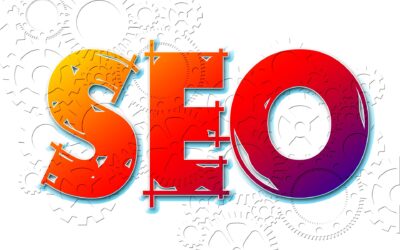How to create your content strategy in 7 steps
You may already have asked yourself the question : What is content strategy ?
Step 1: Audit existing tools and web content
As with any major project, it is advisable to start by taking stock of the situation to establish a starting point. The first thing to do is to analyse your various media (website, social networks, brochures, etc.) in order to identify their content, classify them by theme, by purchase phase or objective.
Using tools such as Google Analytics or Search Console, you can then analyse the performance indicators: traffic, conversions, bounce rate, etc. These elements will help you make decisions about the content in question! Should you delete or expand a topic? Make it more attractive?
Updating content is the lifeblood of the business, and don’t forget: content has many lives and can be renewed in different ways, for example with new images and articles that you have waved your magic wand over !
Step 2: Define your personas and understand their buying journey
In marketing strategy, a persona is an imaginary character representing a target in the context of the development of a new product or service or a marketing activity such as content creation. The persona allows you to avoid communication that is too focused on your brand and product: the approach puts the customer and their needs at the centre of your approach and also allows you to create adapted content.
In the case of content creation, you will therefore think about who you want to address and define the typical profile of your targets, their possible queries and keywords that they type on search engines. It is also important to understand the buying phase your personas are in. Depending on the phase, your content will not be the same – it is up to you to adapt your content to accompany your customers to the next stage of the conversion tunnel !
- Discovery phase – awareness of the need
- White papers, blogs or e-books are perfect for topics that start with “why”.
- Consideration phase – looking for solutions
- Tools that give tips, tools and advice (how to…)
- Decision phase – comparing offers and making a purchase decision
- Testimonials, free trials, case studies…
- Retention phase
Step 3: Set goals
Knowing what you want to achieve with your content strategy (as with all other marketing campaigns) is essential.
Your objectives must be SMART, i.e. specific, measurable, achievable, realistic and time-bound.
For example, with your content you could hope to increase the number of visitors to your website by 10% within the next 12 months, reach the 10,000 subscribers mark on your Facebook page within 6 months or even retain one customer each month?
Depending on the objectives you have set, you will think about a certain number of actions to take and then define the performance indicators that will allow you to measure their effectiveness and know whether or not the objective has been reached.
Step 4: Define your editorial line (the substance)
Developing a content strategy involves defining your editorial line. In concrete terms, you need to think about the content of your marketing content (theme, subject, message, tone, distribution sources, frequency of publication, etc.) which will enable you to meet the expectations of your targets (defined beforehand).
In order to better visualise your content strategy in the long term and to have a better organisation, we advise you to list your content in an editorial calendar.
Once you have determined your editorial line, the next step is to produce the content.
Step 5: Diversify content formats (the form)
In order to satisfy them and arouse the interest of as many people as possible, it is important to vary the form of the content.
Here are some formats that can be of great use to you :
- “how-to…?” articles help boost your visibility because they answer a question from Internet users
- White papers or ebooks: these downloadable formats require long hours of work to design but can bring you many leads.
- Case studies showcase your skills. They are an excellent way of proving your expertise and give your future clients confidence.
- Videos that you can relay on your social networks and especially on your Youtube channel. This type of content is quick and easy to share and gets the best return on investment.
- Infographics to illustrate topics and highlight important points. This format is shared three times more than blog posts.
.
Tip: diversify your content and turn your blog post into an infographic or a white paper and vice versa.
Step 6: Promote your content
Producing content is good, but promoting it helps to give it a boost so that it is visible and read by your targets, otherwise there is no point in spending hours writing it.
Step 7: Analyse performance
You’ve taken it upon yourself to follow no recommendations to the letter, written great value-added content, spread it around. Fantastic. But now we need to make sure it’s effective, right? This last phase therefore consists of monitoring and measuring the performance of the content so that it can be quickly adjusted and continuously improved.
By regularly analysing the previously defined KPIs, you help to improve your content marketing strategy.
Need help from a professional content strategy consultant or content strategy agency? We are looking forward to creating a content strategy for you and your company.


